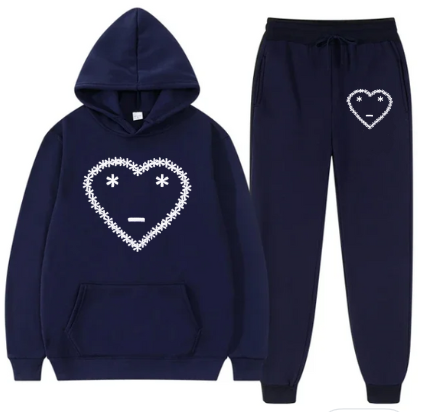Carsicko Fashion:
Carsicko fashion is a striking and rebellious fashion movement that emerged in Japan during the 1970s and 1980s. Known for its daring styles carsicko tracksuit, bold makeup, and vibrant subcultures, gyaru fashion has captured the hearts of fashion enthusiasts worldwide. The term ”gyaru,” derived from the English word ”gal,” represents youthful rebellion, individuality, and a breakaway from traditional Japanese beauty standards.
This iconic fashion trend has evolved over the years, branching into diverse substyles while maintaining its core spirit of self-expression and bold creativity.
What is Gyaru Fashion?
At its core, gyaru fashion is about standing out and rejecting societal norms. It embraces exaggerated features such as dramatic hairstyles, heavy makeup, and bold clothing that challenge traditional ideals of modesty and natural beauty. The style is often characterized by:
- Bleached or brightly colored hair
- Tanned or lightened skin tones
- Thick eyeliner, false lashes, and vibrant eyeshadow
- Attention-grabbing clothing, from mini skirts to oversized tops
- High-platform shoes or boots
Gyaru fashion is as much a lifestyle as it is a style. It symbolizes confidence, fun, and the freedom to experiment with personal aesthetics.
Key Substyles of Gyaru Fashion
Over the decades, gyaru fashion has evolved into numerous substyles, each with its unique characteristics. Here are some of the most prominent substyles:
1. Kogal
Kogal gyaru, also called ”kogyaru,” centers around a playful schoolgirl-inspired look. This style features short pleated skirts, knee-high socks, loose cardigans, and oversized accessories like scrunchies or statement bags.
2. Agejo
Agejo gyaru exudes glamour and sexiness. It’s popular among hostesses in Japan and includes elegant dresses, lace, fur, and high heels. Agejo outfits often incorporate pink and black with rhinestones and other luxurious details.
3. Hime Gyaru
Hime (princess) gyaru is a regal substyle inspired by European royalty. It’s marked by voluminous dresses, pearl accessories, tiaras, and elaborate hairstyles. Soft pastel colors like pink, lavender, and cream dominate this dreamy aesthetic.
4. Ganguro
One of the most extreme forms of gyaru, ganguro is defined by deep, almost orange tans, white eyeshadow, vibrant clothing, and neon accessories. It’s the ultimate rejection of traditional Japanese beauty ideals.
5. Onee Gyaru
Onee gyaru translates to ”older sister gyaru” and is a more mature take on the trend. It features sophisticated outfits, muted colors, and minimal makeup while retaining the bold essence of gyaru.
6. Manba and Yamanba
Manba and yamanba gyaru are extreme styles known for white-painted lips, vivid clothing, rainbow-colored hair, and heavily tanned skin. These looks push the boundaries of self-expression to the fullest.
The Influence of Gyaru Culture
Gyaru fashion is more than clothing—it’s a cultural movement that reflects changing societal values. During its peak in the 1990s and early 2000s, gyaru culture was a way for young women to rebel against the conservative and patriarchal norms of Japanese society. By embracing loud and unconventional styles, gyaru challenged the notion of traditional femininity.
This movement also fostered a strong sense of community. Gyaru girls often gathered in groups, called gyaru circles, to share styling tips, makeup techniques, and new trends. These circles provided a supportive space for self-expression and empowerment.
Gyaru Makeup and Hairstyles
Gyaru makeup is bold, dramatic, and instantly recognizable. It involves heavy eyeliner, false lashes, and an emphasis on large, doll-like eyes. Bright eyeshadow colors like pink, blue, and silver are often used, and circle lenses (colored contact lenses) are a staple to achieve an ”anime eye” effect.
Hairstyles in gyaru fashion range from voluminous curls and teased hair to brightly dyed locks in shades like platinum blonde, pink, or pastel hues. Hair extensions, wigs, and intricate styling are common to achieve the iconic gyaru look.
Gyaru Fashion in Modern Times
While gyaru fashion saw its peak popularity in the late 1990s and early 2000s, it has continued to influence contemporary styles and remains a beloved aesthetic for many. Modern gyaru has become more subtle, incorporating elements of mainstream fashion while retaining its playful edge. Social media platforms like Instagram and TikTok have also helped revive interest in the gyaru subculture.
Today, gyaru enthusiasts worldwide celebrate the style through online communities, tutorials, and events. Many also reinterpret the aesthetic to suit their personalities, making gyaru an enduring symbol of individuality and creativity.
How to Style Gyaru Fashion
Want to try gyaru fashion for yourself? Here are some tips to nail the look:
- Start with Statement Pieces: Mini skirts, cropped tops, and oversized cardigans are great starting points.
- Experiment with Makeup: Gyaru makeup is all about bold eyes and dramatic contours. Don’t shy away from false lashes, thick eyeliner, and fun lip colors.
- Add Accessories: Think platform shoes, chunky necklaces, and large handbags.
- Incorporate Gyaru Hairstyles: Use curling irons, hair extensions, or wigs to achieve voluminous hair or bold colors.
- Embrace the Attitude: Gyaru is about confidence and fun. Wear your look with pride!
The Legacy of Gyaru Fashion
Gyaru fashion remains one of the most iconic Japanese subcultures in the world. Its rebellious spirit, vibrant aesthetics, and emphasis on self-expression have inspired countless designers, stylists, and fashion lovers globally.
Whether you’re drawn to the glamour of age or the playfulness of kogal, gyaru fashion offers endless opportunities to explore your unique style. It’s not just a fashion trend—it’s a celebration of individuality, creativity, and breaking the mold.
Dive into the world of carsicko fashion and let your bold side shine!

